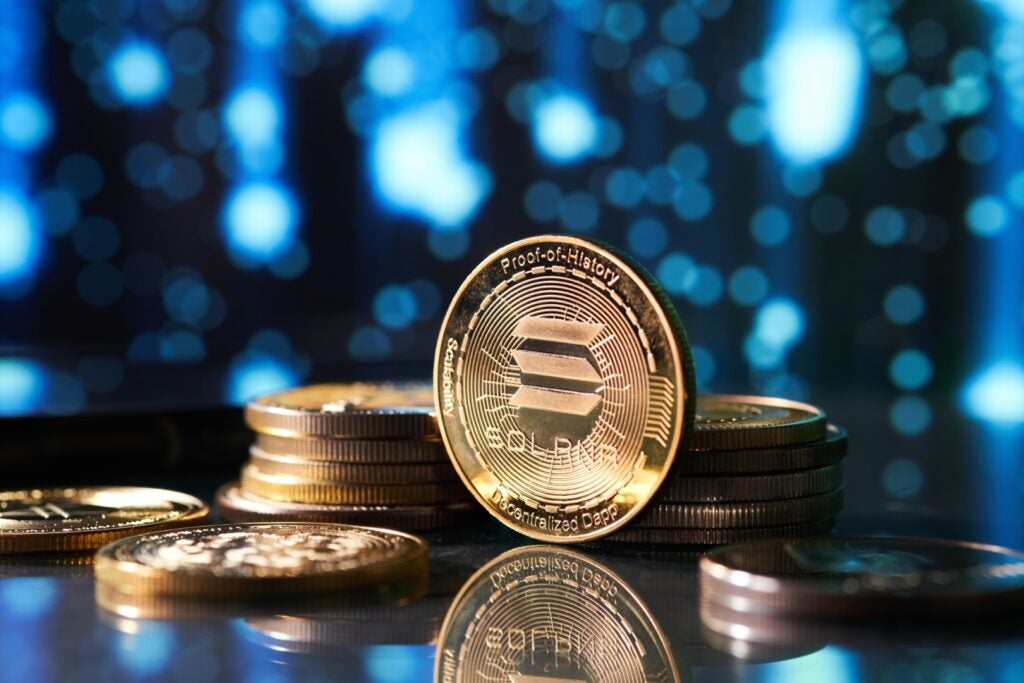SOL SOL/USD, the native coin of decentralized blockchain platform Solana, has taken part in the recent crypto rally, and the token currently trades at its highest level since late-December 2021. The crypto is celebrating its fourth year anniversary on Saturday, and to commemorate the special occasion, here’s a primer on the platform.
The Origin: In November 2017, Solana’s co-founder Anatoly Yakovenko published a white paper describing the proof-of-history, a technique for keeping time between computers that do not trust one another. Armed with the experience in distributed systems he acquired during his tenure at Qualcomm, Mesosphere and Dropbox, he worked toward simplifying synchronization that could make the network “blazing fast” bound only by network bandwidth.
He managed to synchronize computers that didn’t trust each other, resulting in a significantly faster cluster.
Yakovenko began to code for the application in C programming language, and his colleague at Qualcomm Greg Fitzgerald advised him to implement the project in the Rust programming language. On Feb. 13, 2018, Fitzgerald began prototyping the first open-source implementation of his friend’s white paper, and the project was published on GitHub under the name “Silk.” The first release rolled out on Feb. 28, 2018 and demonstrated that 10,000 signed transactions could be verified and processed in just over half a second. Another Qualccomm cohort, Stephen Akridge, demonstrated that the throughput could be massively improved by offloading signature verification to graphics processors.
The trio joined hands to co-found a company, which was then called Loom. Later, they renamed the company as Solana Labs in order to avoid confusion with the Ethereum-based project “Loom Network.” The name “Solana” was chosen to give credit to Solana Beach, a small beach town, north of San Diego, where Yakovenko, Fitzgerald and Akridge lived for three years while working for Qualcomm. On March 28, 2018, the trio created the Solana GitHub organization and renamed “Silk” to “Solana.”
In June 2018, the team scaled up the technology to run on cloud-based networks, and on July 19, published a 50-node, permissioned, public testnet consistently supporting bursts of 250,000 transactions per second.
The company raised over $20 million in multiple token sale between mid-2018 and July 2019. After raising $1.76 million in a public token auction on CoinList, Solana launched the Mainnet Beta in March 2020. The beta version featured transaction capabilities and smart contract support but did not include staking reward at that time.
See Also: How to Buy Solana (SOL)
The Launch: Solana was launched in March 2020 — a trying time when the world was grappling with the COVID-19 pandemic. The first block was created on March 16.
Reminiscing on the event, Raj Gokal, a co-founder who joined Solana Labs at the end of 2017, said in a post on X, “On March 16, 2020, lockdowns were spreading financial panic globally. that day the Dow dropped 12.9%, bigger than any day in the great depression. every founder we talked to, across all of tech, not just crypto, cancelled their launch.”
“There were only a few dozen people who thought solana’s design could work at scale, and they had the courage to push past the fear. they had one overriding motivation,” he said.
In June 2021, Solana Labs sold $314 million worth of SOL to a group of funds led by Andreessen Horowitz and Polychain Capital.
The project, however, had its share of setbacks as well. In its early years, a large of number of simultaneous transactions led to outages. The company faced a class action lawsuit in July 2022, which alleged that it sold unregistered securities tokens from March 24, 2020 and deliberately misled investors regarding the circulating supply of SOL tokens.
The SEC named SOL along with 12 other currencies that were offered by cryptocurrency exchange Coinbase as securities in a lawsuit it filed against the exchange. By offering these as tokens, Coinbase evaded disclosure norms, the regulator alleged.
The Present: Solana now boasts of 276 billion transactions, has over 1,600 validators and 254 million blocks. SOL, with a market cap of $81.7 billion, is currently the fifth-biggest crypto. Over the last 24 hours, about 11 billion units of the crypto have exchanged hands.
Gokal said, “It’s now routinely topping the charts with daily trading volume (ATH $3.6B yesterday!) , active users, new tokens, nfts minted, daily transactions, tps, nakamoto coefficient, and a bag of other metrics.”
“But we’re still, at best, at the equivalent to early 2000’s internet.”
Returns From SOL: A $1,000 invested in SOL in April 2020 would have fetched an investor 1,052.63 tokens. The same tokens would be worth $192,590 (based on Friday’s closing price of $182.96).
Source: Benzinga Pro data
This would translate to a return of 19159% over a four-year period. In the same timeframe, the S&P 500 Index, a broader equity market gauge, rose merely 29%.
At last check, Solana rose 0.53% at $184.64, according to Benzinga Pro data. This is off its all-time high of $260.06 hit on Nov. 6, 2021.
Read Next: Is Solana Safe?
Photo: Shutterstock
This news is republished from another source. You can check the original article here

